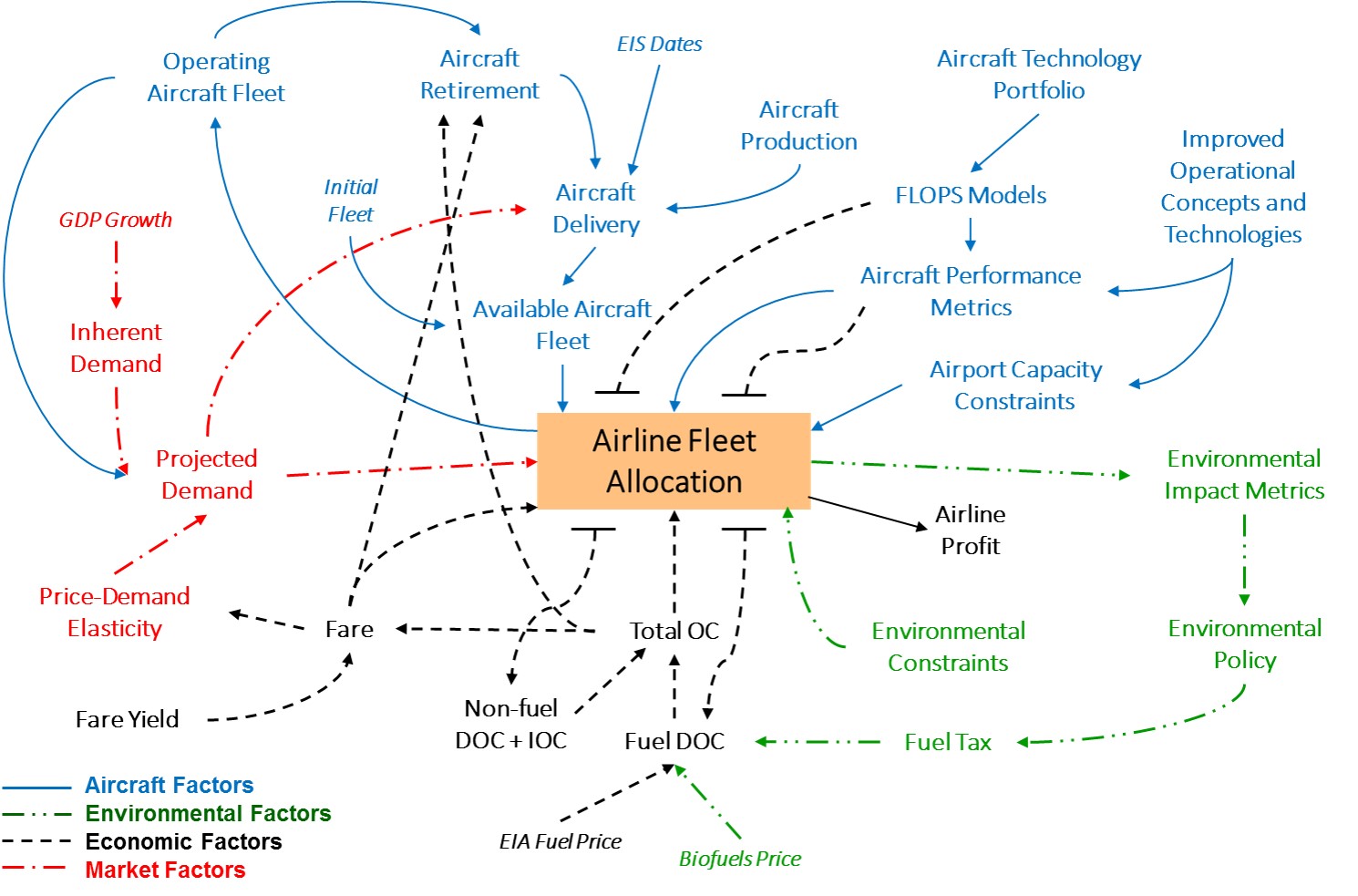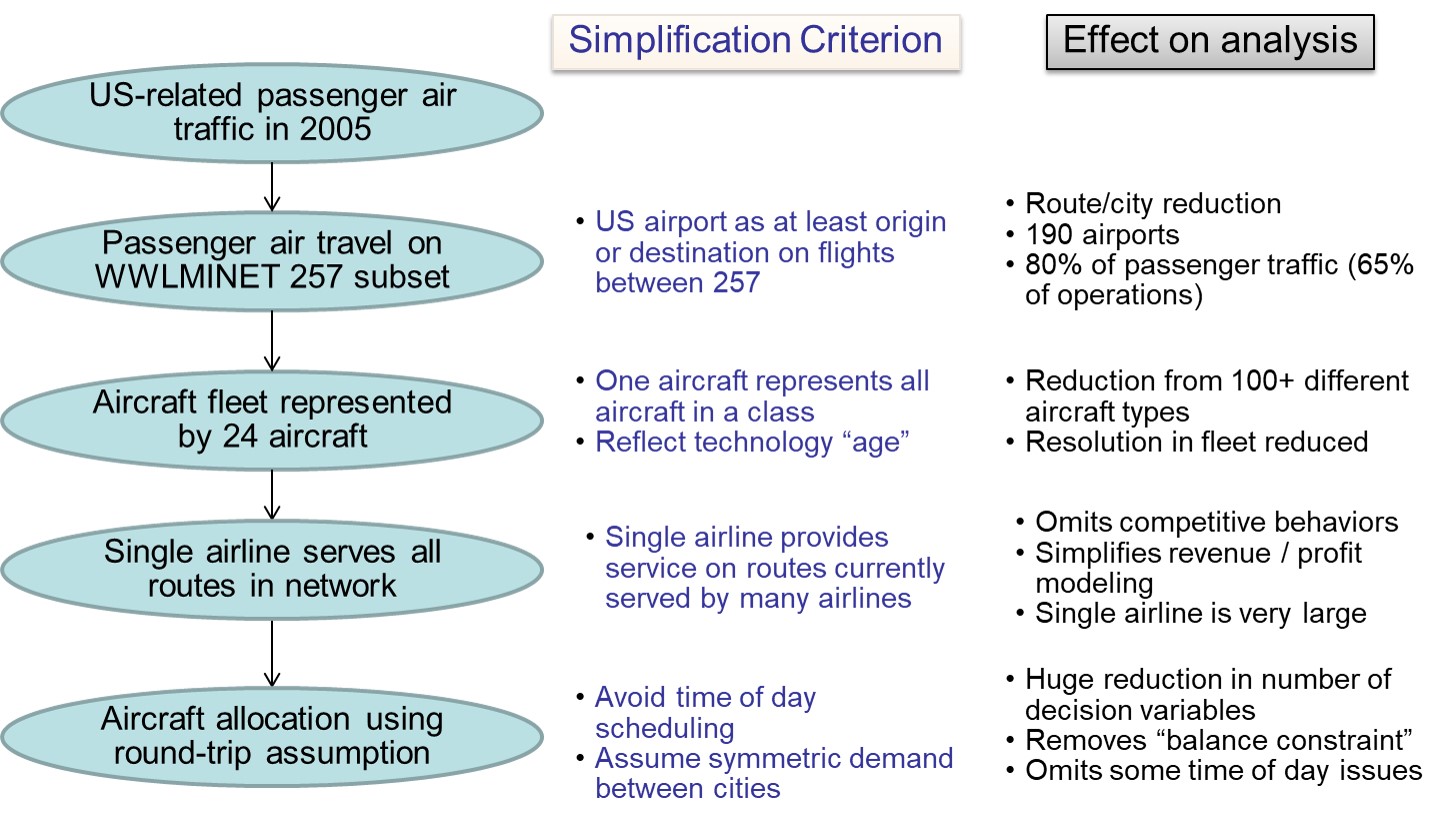The Fleet-Level Environmental Evaluation Tool (FLEET) is a computational simulation tool developed at Purdue to assess aviation’s contribution to environmental emissions and noise under several different scenarios. These scenarios include different market conditions, policy implementation, and availability of novel aircraft concepts and technologies. At the heart of FLEET is an aircraft allocation model that represents the airlines’ profit-seeking operational decisions. Around the allocation model is a system dynamics inspired approach that mimics the economics of airline operations, models their decisions regarding retirement and acquisition of aircraft, and estimates market demand growth.

Since the real US air transportation network is large and complex, FLEET makes several simplifying assumptions to make the problem tractable. A summary of the key assumptions is given in the figure below.

FLEET simulations by default begin in 2005 and run upto 2050, with an average day representing each year of simulation. Several parameters can be modified to specify the scenario, including:
- Economic (GDP) growth rate which affects demand change
- Fuel price evolution which affects the airlines’ DOC
- Aircraft entry-in-service dates for new technology availability
Standard results from FLEET include evolution of emissions of CO2, NOx, and noise, and growth in fleet sizes and their yearly allocation.
Following figures show examples of results obtained from simulations. These figures show how the normalized demand and CO2 values change for three different scenarios simulated in FLEET. Scenario one, “Ongoing fleet renewal,” is the case where no new technology aircraft are introduced and the retired aircraft are replaced by newer aircraft with the same technology level. Scenario two, “Advanced tube-and-wing,” is the case of new technology aircraft being introduced, but ones which are still of the conventional tube-and-wing configuration. Finally, scenario three, “Low carbon fuels,” is the case where biofuels are introduced. For details on the modeling and numerical results, refer Moolchandani et al., 2016.


In summary, in this project we simulated the fleet allocation decisions of airlines in the US to study the environmental impact of aviation in form of CO2 emissions and noise for different scenarios of market demand growth and policy implementation.